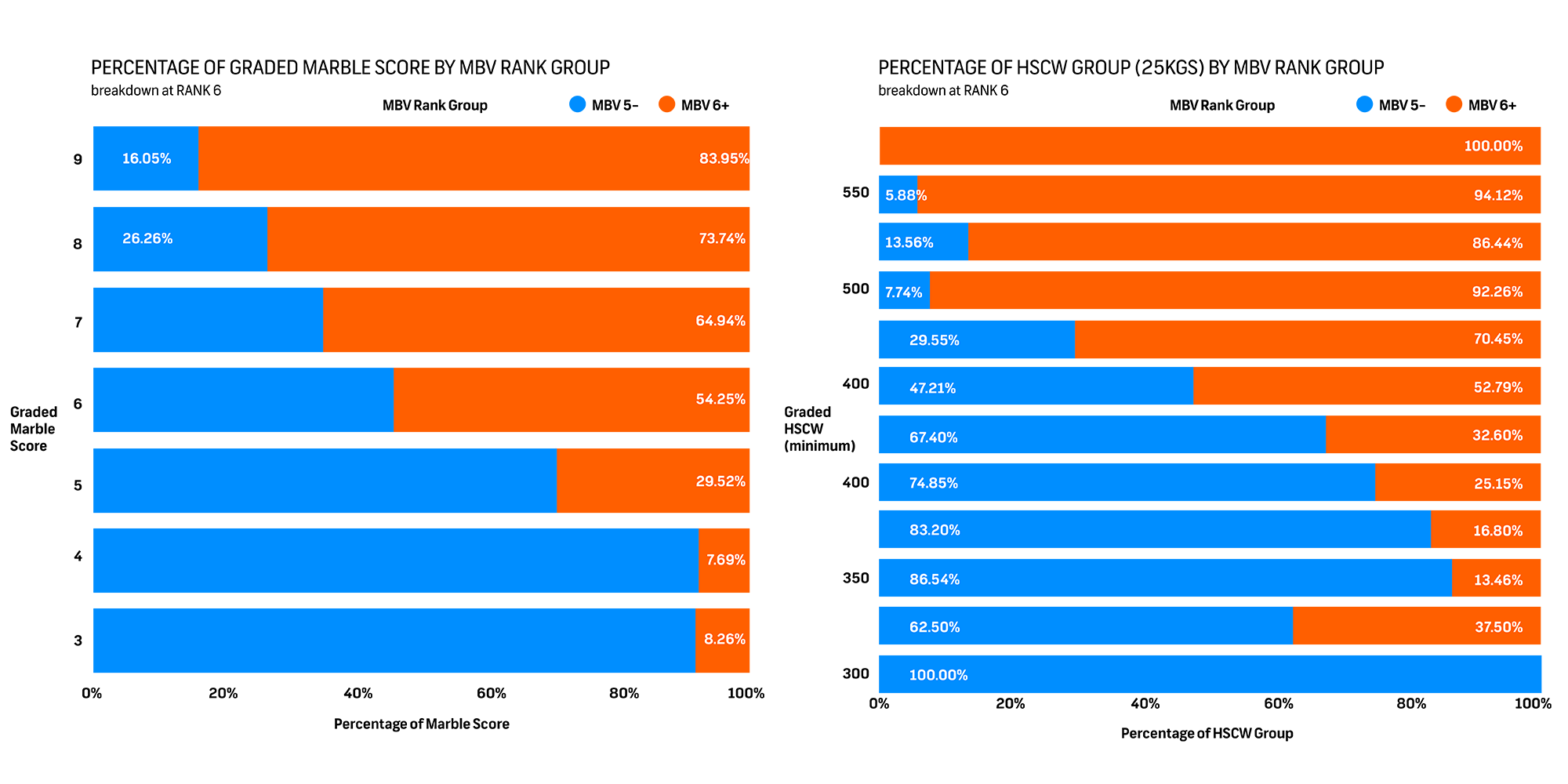Australian Country Choice (ACC) is the largest family-owned vertically integrated beef producer in the world. With pristine cattle raising operations across Queensland, through to its state-of-the art export processing facility, it is a true innovation driven Australian Agricultural success story.
Part of ACC’s continual innovation and value-add has been the establishment of a Wagyu Herd in 2017 and pivot in strategy to capture increased value and profitability through production of luxury Wagyu beef to support leading global export brands.
ACC has relied heavily on genomic and production data to drive genetic selection within its Wagyu program. Ryan Carter, the Senior Manager of Southern Breeding at ACC said that “it has become increasingly apparent that continual analysis of this data, coupled with phenotypic assessment, is critical to producing a consistent and reliable product whilst continuing to grow scale of production.
ACC has been an early adopter of the Wagyu Feeder Check DNA tool developed by the Australian Wagyu Association in partnership with Neogen Australasia and CSIRO. Ryan said that “ACC have found the Wagyu Feeder Check to be an extremely helpful tool to evaluate our terminal progeny for specific production traits, allowing for informed decision-making well before carcass results are available.”
“We have processed a total of 5,923 Wagyu X samples through the Wagyu Feeder Check and have received carcase results for 2,097, providing compelling data to back operational and production measurements. These animals range from steers killed in 2021 through to our 2023 weaners, encompassing F1 Wagyu x Angus through to high content purebred steers. Currently, Tissue Samples are collected at around 12 months of age, with results back before feeding program entry.”
The Wagyu Feeder Check is a commercially available tool that provides data on the genetic merit of Wagyu content animals for key traits including Carcase Weight, Average Daily Gain, Marble Score, Eye Muscle Area and Rump Fat. Genetic merit scores (Molecular Breeding Values; MBVs) are provided between 1 and 10 (10 being highest) for each trait and can be obtained at or before feedlot induction to improve animal management.
Ryan said that “comparison of Kill Results with Wagyu Feeder Check MBV data on the slaughtered steers demonstrated strong correlation between the MBV Rank of each animal and their actual production outcome for each trait across the cohort”. This was best demonstrated by grouping animals by their graded/actual marble score and assessing the MBV rank from the Wagyu Feeder Check across that group.
The following graph represents the percentage of animals given an MBV 5 or lower (blue bars) and MBV 6 or higher (orange bars), at each graded marble score (AUSMeat Marble Score). In the ACC carcase data, of all carcasses that graded AUSMeat Marble Score 9, 16.05% were predicted to have lower expression of marbling as they were evaluated to have a Marbling MBV Rank of 5 or lower. Counter to this, the MBV Rank 5 and below cattle accounted for 91.74% of carcasses which marbled 3 and 92.31% of carcasses which marbled 4.
Wagyu content carcases that grade marble score 4 or below are estimated to cost the industry $1,000 per head on average. Prior analysis conducted by the Australian Wagyu Association suggests that removing the bottom 10% of crossbred Wagyu Feeder cattle could save the industry $22 million per year in improved resource use efficiency.
ACC have also used the Wagyu Feeder Carcase Weight rankings in a similar analysis, that shows a strong trend between achieved Hot Standard Carcase Weight to the CWT MBV from Wagyu Feeder Check was seen in the ACC data.
Grouped into 25 kilogram weight brackets, 94.12% of carcasses between 550kg and 575kg were produced by a Carcase Weight MBV Rank 6 or above animal (orange bars), as well as all four 575kg + carcasses. Of the 155 carcasses in the 500kg to 525kg group, only 12 were produced by an animal with an MBV Rank of 5 or below (blue bars) for 7.74% of the bracket.

Christian Coffey, ACC’s General Manager of Rural Properties described the future added value of using the Wagyu Feeder Check Tool, saying “We also receive DNA parentage information to provide precise through-chain verification of Wagyu content and to link data back to Fullblood Sires through Sire Verification.
Sires whose progeny averaged favorably in kill data analysis were also highlighted through average progeny MBV rankings. Out of 99 Sires, the top 10 by average progeny MBV Rank achieved a graded marble score average of 7.11 across 242 carcasses. In comparison, the Bottom 10 Sires achieved 5.3 across 281 carcasses.”
The MBV’s on the progeny along with the Sire Verification translates to predicted Sire performance. This can be used as part of the bull selection criteria when joinings are being decided, giving the ability to predict the potential genetic performance of a sire well in advance of kill data analysis. These sires have the potential to directly influence up to four generations of progeny. With Wagyu Feeder Check, conclusions can be drawn on the future usage of the bull before kill data is analysed.
ACC CEO Anothy Lee said “We see the Wagyu Feeder Check tool as an important improvement in sustainability of our production, by only targeting animals to the ACC Wagyu program that will achieve the high quality standards for Wagyu beef. ACC is using this information to improve its Wagyu production supply chain, identifying low profitability animals that will not meet the requirements from long-feeding programs.”
